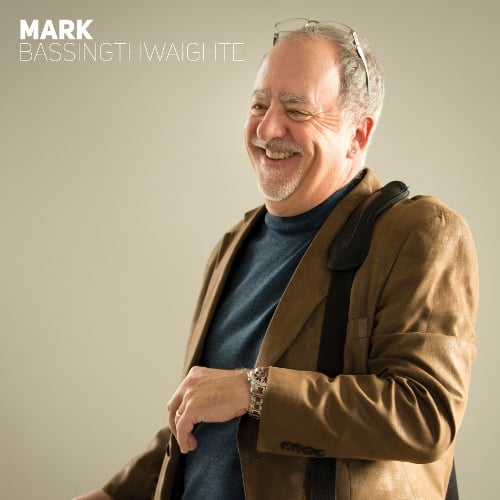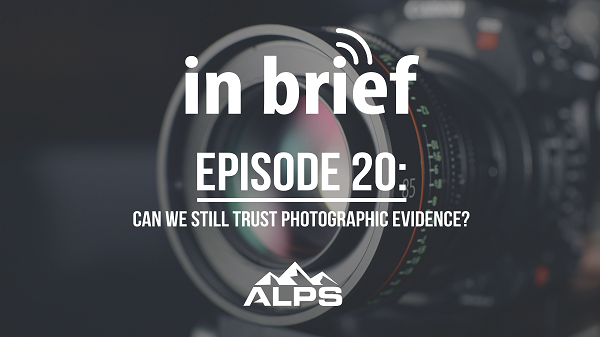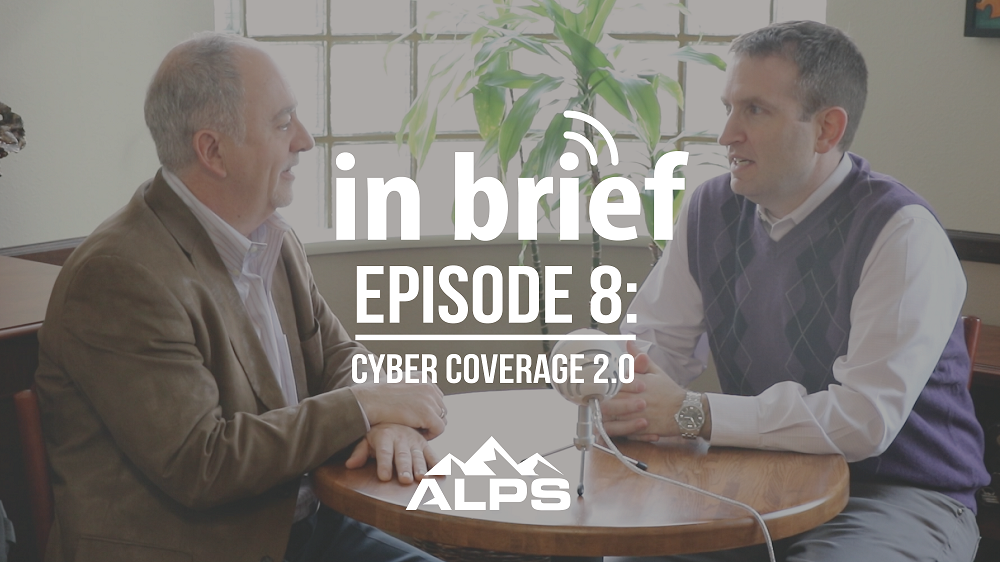15 min read
ALPS In Brief Podcast — Episode 29: Falling in Love with the Cloud
On this special Valentine’s Day episode of ALPS In Brief, Mark sits down with Joshua Lenon, lawyer in residence and data protection officer for Clio
We've crafted solutions tailored to your firm
The world of insurance for law firms can be confusing, and difficult to navigate. We've created this glossary because these common insurance terms should be easy to understand.
12 min read
 Mark Bassingthwaighte, Risk Manager
:
Aug 17, 2018 12:00:00 AM
Mark Bassingthwaighte, Risk Manager
:
Aug 17, 2018 12:00:00 AM

We may have reached, “a fairly critical point where traditional photographic evidence just isn’t as reliable as it used to be.” This according to our most recent podcast guest, Joe Kashi. In addition to being a trial attorney in Alaska, Joe has worked in automation technology and is himself a serious photographer. Recently Joe taught a two-part webinar series, “Using and Misusing Visual Evidence, Parts 1 and 2,” moderated by ALPS Risk Manager and podcast host, Mark Bassingthwaighte. In this interview Mark and Joe delve even deeper into how technology and the accessibility of photo editing software is changing how we view photographic evidence in the courtroom.
ALPS In Brief, The ALPS Risk Management Podcast, is hosted by ALPS Risk Manager, Mark Bassingthwaighte.
MARK:
Hello. I’m Mark Bassingthwaighte, the Risk Manager here at ALPS. Welcome to the latest episode of ALPS In Brief, a podcast that comes to you from the historic Florence building in beautiful downtown Missoula, Montana. I’m delighted today to be able to introduce not only a guest, but a good friend, Joe Kashi, and Joe is a lawyer who practices in Soldotna, on the Kenai Peninsula in Alaska. Joe, as always, it’s great to have an opportunity to visit with you again. Do you want to take a moment and just share an item of interest about yourself to our guests?
JOE:
Sure, just by way of brief bio. But usually, other people do it. Well, Mark, you and I have been friends for over 20 years, since we were doing technology presentations for the ABA Tech Show together.
MARK:
That’s right.
JOE:
And quite a number of presentations after that. So, I think we know each other’s handwriting pretty well. But for our listeners, I got my bachelor’s and master’s degrees at MIT, where I’ve been working with automation technology since the late 1960s with old hand punch card mainframes, and hopefully stayed reasonably current since that point, even though I’m practicing as a lawyer in a relatively rural part of Alaska.
After Georgetown Law School, I worked in D.C. for a while. Actually, myself and two other guys were the first three people to work on a National Science Foundation project, tracking the rise of the, quote, “information society in America,” which actually was a term we coined back in the mid-1970s. I got rather tired of … I guess I’d have to say I’m an east coast refugee, because after that, I moved to Alaska, where I’ve been doing trial practice for the last 40 years, mostly in construction litigation, personal injury, and some real property litigation.
MARK:
I’ve always … Thank you for sharing that. Every time we have these conversations, I learn a bit more. I’ve always viewed you as a guy who has been sort of ahead of the rest of us. That is in part why I entered into a discussion with you last summer about putting on a webinar program for us, and you did it, although I was technically along for the ride. You did all the heavy lifting on this, and I’m referring to a two-part, three hour webinar series that you did. It’s still up, by the way, and available for download, if any of you out there in the listening audience want to take a look at this at some point, but it was entitled, “Using and Misusing Visual Evidence.”
My interest, as you recall, Joe, is just coming to the realization that so many of us, day to day, have these photo editing tools, and you come back from vacation, and you do all kinds of editing, and I started to think, “Wait a second. This is so easy to do.” I don’t buy that clients and perhaps at times lawyers, not necessarily trying to do anything unethical or something, but that people aren’t editing and doing things with evidence, in terms of photographic evidence.
So, we kind of got started on this program. I’d like to kind of follow up on that program, and ask again the question, should lawyers be concerned about the ease with which anyone can edit digital photographs? And to follow up to that, why?
JOE:
Well, Mark, I’m going to throw in a little bit of extra background there. I’ve also been doing serious photography for about 50 years, ever since studying with Minor White back at MIT, and actually had a photo finishing lab for several years as a sideline. It’s an unusual situation, because the digital era really is bringing three different areas into focus; trial practice, photography generally and conceptually, and then the more recent digital revolution, which very much allows you to make the sorts of work you never could do with a traditional chemical film and paper kind of film photography aspect before.
So, really, what we’ve reached is … I would say rather suddenly, is a fairly critical point where traditional photographic evidence just isn’t as reliable as it used to be. In fact, I can say that it’s becoming significantly less reliable. The concerns we run into, I think they’re fairly common. I’ve had cases … And it’s not so much the lawyers that are the problem as the people who’ve consulted with me about these situations, and there have been several, even in our small town of Alaska that have come to my attention, has to do more with clients or complainants who are bringing … show excessively enhanced photographs to the attention of the lawyers, and then attempting to use those as evidence.
Every photograph is enhanced to some extent, otherwise it’s essentially unusable. You make traditional correction. You correct the exposure, correct the contrast.
MARK:
Right.
JOE:
That sort of thing. Not a problem. The sorts of corrections that you can make in a dark room were generally within reasonable, although even then, there’s a lot of case law about what is or not acceptable. More recently, and especially the last two or three years, with the rise of artificial intelligence neuro-networking built into various photographic “enhancement” programs, we’ve reached sort of a watershed, where there’s essentially no film photography being done anymore, except by people doing it are the fine arts standpoint. That’s usually large format, four by five sorts of cameras and larger.
For the average day to day use, digital photography’s great, but the problem is ensuring that what you’re using is appropriate, and therefore not being misused. It’s important, I think, to note that using photography to document stuff or to explain, is a tremendous benefit. It’s the sort of thing which helps trial lawyers really go and help make their story really, really comprehensible very quickly, because we’re primarily visual rather than linear. You can get a lot more and be a lot more persuasive with a single picture than with the proverbial 1,000 words. We’re taught in law school, “Paint a picture with words.” I suggest you show the picture instead. It’s going to be a lot more reliable.
But people, I think, are becoming more and more aware of the ease with which matters can be manipulated, and I would caution, it’s not just still photographs. There’s new technology that I’ve seen demonstrated by Adobe and others that allow you to go and totally erase people, totally, from a video. It’s not just digital stills anymore. It is digital video as well becoming very quickly susceptible to the same level of manipulation.
MARK:
That’s what I find absolutely frightening in some ways.
JOE:
Me too.
MARK:
It just makes my head hurt at times. When I think about the pace it changed, Joe, and in terms of hardware and software, it just … The stuff is crazy fast. I was sharing … I recently read an article about a startup that built a smartphone with 16 cameras onboard, and I’m sitting here, “Why in the world would I need 16 cameras on a smartphone?” But, you know, again …
JOE:
Well, that brings up a good point, Mark. I was going to mention that.
MARK:
Yes.
JOE:
I was thinking as you’re talking, there’s something called computational photography, which is now coming to the fore. Computational photography can take a lot of inputs and, by applying intensive computation, really clean them up a great deal. On the webinar that we have posted, there’s some examples of those sorts of computational photography that go way beyond just going and using traditional digital tools in something like Lightroom to go and enhance, say, pull out a face in a video.
Now, there’s a certain amount of enhancement that state supreme courts around the country have found to be acceptable. But what’s become … on videos and stills both, but there are also levels where it goes not just beyond excessive enhancement, but it can start rising to the level of a fraud in the court and a clear ethical issue. It’s kind of a fine line there between what’s appropriate, what isn’t appropriate, so obviously based upon circumstances. But the common thread has been generally to use a standard program, which produces replicatable results, and provides an audit trail. More than anyway, we’re getting back to the traditional evidence rules 102, 103, 104, where the weight is becoming critical. The weight appropriately has to be decided by the trier of fact, and whether it’s even admissible at all. Obviously by the trial judge.
But when you get back to those issues, what the courts are starting to say is, “We want you to use a program that doesn’t allow you to paste a gun from one person’s hand into the picture of a totally innocent person, or paste one face on another.” I would argue that that’s critical. So, I tend to recommend a program that has a non-destructive editor, such as Adobe Lightroom, where what you have is a database of changes that you’ve made, and you can step backward or forward. Unlike a program like Photoshop, where once you’ve gone and done the image, let’s say you’ve composited two layers; put the gun into somebody else’s hand. Once you’ve gone and done that, you save the file, there’s no going back. All the other changes are lost. Everything is essentially lost in terms of prior data, being able to backtrack to where you started.
So, what you have then is a need for looking very carefully at the metadata. All the information about the photograph, what was done about it, and to a certain extent, that is embedded in the files. If the metadata seems incomplete or missing, then obviously that’s a case by case basis. They should be very suspicious about the photograph, because it’s obviously been enhanced. Metadata … Every JPEG file, which is kind of the standard interchangeable format, every JPEG file by international definition, the very definition of a JPEG required that certain data be embedded in it that have a lot to do with showing the circumstances that it was taken, how the camera was adjusted. For example, perspective, which is critical in a lot of accident injury cases. Those sorts of things are critical. They’re in the metadata.
If the metadata’s not there, then you’re likely to go and be very … or should be very suspicious about the photograph itself. If the metadata is there, you could go and then start looking at it from the standpoint of traditional case law about what photographs are appropriately admissible or not. And then it goes to the weight of the evidence at that point. Generally speaking, I recommend that people use a non-destructive editor, like Adobe Lightroom. Not a destructive editor that bakes the changes in forever, like Adobe Photoshop or similar layered programs, that they use what’s called the raw file.
Raw files are all the data that the sensor ever captured. They’re saved as a raw file. If you set it up as such, JPEG and raw files are two different formats. JPEG, once a change is made or once it’s taken by the camera, all the data is baked in. You can’t change it. You can’t recover all the stuff that’s been lost through JPEG compression. Raw gives you the ability to go with a program like Lightroom and stipulate from the original data all the way through to whatever your final result is that you want to show to the trier of fact, and then prove to the trier of fact what steps you’ve taken. So you could show … you could go step by step, repeating along the way. That’s the feature of Lightroom. You can step by step along the way, and show to the trier of fact how you got to the result you’re offering as an exhibit. That’s often been very critical as an admissibility factor for both stills and videos in the state supreme court decisions I read.
MARK:
What-
JOE:
Anyway, metadata … Raw format if you can. Metadata, try to avoid formats that bake the changes in forever and lose everything.
MARK:
That makes sense to me, but I often … in terms of what lawyers should be doing, but … as they handle and use digital evidence, visual evidence. But I’m a risk guy, and I also … A big part of my job is looking at, where the problems kind of come up? I guess one of the things I get concerned about is just clients, whether it’s an adverse party or our own client. They have ready access to these programs that, to use your phrase, that are destructive kinds of things, and can insert the gun into a hand of somebody that … Those kinds of things.
JOE:
And then try to erase the evidence.
MARK:
Right, right. Do you think … Am I … I tend to get paranoid at times about all kinds of things, but is that a realistic concern?
JOE:
Yes.
MARK:
Do lawyers need to be aware?
JOE:
I’ve seen several cases like that come up in the last few years, even in our small area of 45, 50,000 people.
MARK:
Yeah. That’s just …
JOE:
I’m aware of at least three.
MARK:
Do you think in terms of our profession as a whole, do you think lawyers generally get that?
JOE:
No.
MARK:
Yeah.
JOE:
Very few lawyers get it. Unfortunately, they may end up getting it in the end. If that occurs, you’ve seen cases where people were newly convicted, upstanding business people, for example. Somebody had a grudge against him, and they didn’t exactly contract stuff, but let’s just say that erasing the metadata prevented people from going in and analyzing that in fact, something wasn’t exactly what they purported to be, but was closer or farther or whatever if you fall. But I’m saying, their perspective analysis is critical at that point.
MARK:
So, if you were to … Let’s pretend for a moment I’m just a young lawyer, kind of trying to get into the litigation game, and you become something of a mentor to me. What would you choose to share? I guess I’m trying to get at, what are the risks that I’m facing if I stay naïve? What do I need to just think about, generally speaking, in terms of trying to become competent in all of this? Just some closing remarks, I guess.
JOE:
Okay. Well, becoming competent in terms of the visual evidence, and I’m referring about stills and video at this point.
MARK:
Yes.
JOE:
Fundamentally, I think what you need to do is at least stay on top of the sorts of changes that are occurring, if nothing else. People tend to be using more and more smartphones, for example, as a primary photographic tool, which I, since I come from a construction litigation background, where it’s often critical, as we showed in the webinar, by the way, construction litigation and personal injury, it’s awfully critically to be able to go and later zoom in and find tiny, but very important details.
If you don’t have the kind of resolution, exposure range, and other factors, that are typically lacking in cell phones, then you’re not going to have that data. My general concern with cell phones is that … or I should say smartphones, is that the photographs from those tend to be on average really not as good as they should be, at a minimum, for forensic purposes in court, especially when you need to make a print that’s bigger than, say, eight by ten for the jury, the view of the jury room, et cetera. We still need to have prints, if you will, for evidence. The fact that a cell phone looks good on a computer screen isn’t sufficient. That’s actually a very well-resolution medium. It looks good, but not for serious forensic use.
So, first thing I think is to start learning how to use, or at least have … learning how to use a higher quality resolution camera. Micro four thirds, APSC full frame digital are good numbers. Any of those will work well. And probably at least become aware of the sorts of things that can be done with programs like Lightroom or Photoshop. You can’t be your own expert. You can’t be your own witness, of course.
MARK:
Right.
JOE:
But at least you could start issue spotting. And issue spotting is, what’s happening with the metadata? What sorts of new computational approaches may render this less positive and start doing serious discovery about the nature of the … basically about the nature of whatever evidence is in front of you.
MARK:
Yeah. Yeah. I like that. How I tend to view this is, we all now, I think in today’s world, really understand and appreciate … Just because it’s on the internet, doesn’t make it true. And I [crosstalk 00:19:17]
JOE:
That’s certainly really … No, that statement is true.
MARK:
Did I get it backwards? I’d say …
JOE:
No, it’s okay, I agree with you.
MARK:
Yeah, yeah. But sort of paralleling that into digital photography, just because we have a digital file, whether it’s a photograph or a video, doesn’t mean that the information presented in the video or on the photo is an accurate capturing of the event.
JOE:
Well, a least not after it’s been post-processed, and potentially not when it was captured, either.
MARK:
Right. Right.
JOE:
What I would suggest overall, Mark, is knowing the traditional evidentiary rules, being able to go and document what was done to the trier of fact. Always having an unaltered copy of the original photograph from the very beginning with everything in it. All the metadata, all the data, anything else. It’s going to be critical. You preserve the original photograph exactly unchanged, be able to show it to the trier of fact what has been done to go with the … to basically make your final exhibit, that it’s within the bounds of conventionally acceptable enhancement. Recognizing that you have to prove weight of the evidence to the trier of fact will go a really long way.
I don’t see a … Given the vast changes in the technology of what can be done post-processing, I’m not sure that we can come up with a good, hard and fast technical rule that’s any more effective than the traditional rules of evidence, assuming that people get the metadata and analyze it with an appropriate expert, and assuming that people go and … trial lawyers understand basic photographic notions as they would affect what’s seen. And it’s always worth remembering that the camera will see things differently than the human eye. At best, there’s an approximation.
MARK:
Yes.
JOE:
It’s not one to one exact.
MARK:
Right, right. Listen, Joe, I really appreciate your taking time to share your insights on what I consider just a very, very important topic. To those of you listening in, I will share; if you would like to learn a bit more, the webinar that Joe put on for us last fall is still available for viewing and download, so on demand webinar on our website, ALPSnet.com. Beyond that, I guess I’d say, hey, I appreciate all of you listening, and have a good one. We’ll see you next time on ALPS In Brief.
JOE:
Thanks, Mark. So long.
Joseph L. Kashi practices law in Soldotna, Alaska. He received his B.S. and M.S. degrees from the Massachusetts Institute of Technology in 1973 and his law degree from Georgetown University in 1976. He is admitted to practice before the Alaska Supreme Court, the U.S. Supreme Court, the Ninth Circuit Court of Appeals, and the United States District Court for the District of Alaska. Since 1990, he has frequently written and presented about a wide range of legal technology topics for the American Bar Association and many state bars. Case studies of his law office’s use of legal technology has been featured on Lexis-Nexis and Adobe web sites.
Link to the on-demand CLE seminars taught by Joe last fall here:
Using and Misusing Visual Evidence, Part 1
Using and Misusing Visual Evidence, Part 2
ALPS In Brief Podcast Intro/Outro Music: Walk In The Park by Audionautix is licensed under a Creative Commons Attribution 4.0 license. https://creativecommons.org/licenses/by/4.0/
Artist: http://audionautix.com/
Since 1998, Mark Bassingthwaighte, Esq. has been a Risk Manager with ALPS, an attorney’s professional liability insurance carrier. In his tenure with the company, Mr. Bassingthwaighte has conducted over 1200 law firm risk management assessment visits, presented over 600 continuing legal education seminars throughout the United States, and written extensively on risk management, ethics, and technology. Mr. Bassingthwaighte is a member of the State Bar of Montana as well as the American Bar Association where he currently sits on the ABA Center for Professional Responsibility’s Conference Planning Committee. He received his J.D. from Drake University Law School.

15 min read
On this special Valentine’s Day episode of ALPS In Brief, Mark sits down with Joshua Lenon, lawyer in residence and data protection officer for Clio

8 min read
There are two types of businesses – those that have been hacked and those that don’t know they’ve been hacked. This may sound like hyperbole, but...

11 min read
If you are not already aware, ALPS proudly partners with Clio, the easy-to-use cloud-based law practice management software company with over...